Ballarat, Victoria's largest inland city, is located 115 km west of Melbourne, on the Yarrowee River.
The legacy of the Ballarat gold rush is reflected in the
heritage buildings and grand tree-lined streets of the town.
The Wathaurung PeopleThe Wathaurong people are part of the clan of the Kulin Aboriginal people.
Strangely enough, most of the knowledge about the pre-colonial practices of the Wathaurong people come from William Buckley, a convict who escaped on a hot Christmas night in 1803 and would live with Wathaurong for 32 years.
After escaping from the penal settlement at Sullivan Bay in south-east Australia, Buckley was adopted by the Wathaurung people, who believed that he was a returned spirit of the former tribesman called Murrungurk. His later account:
"(The Wathaurong Aboriginals) came up and viewing me for some time with evident astonishment at length made signs to me to follow them. I immediately did so although I despaired of my life as my impression was that they intended to kill me … on reaching a hut or "Willum" near which was a Waterhole I made signs that I was thirsty and they gave me some water and without being asked offered me some gum beat up and prepared in their manner. They then all sat down and a general howling was set up around me the women crying and sobbing…"
"After a few years residence among the natives I could speak the language quite well – when I had attained this knowledge of their tongue, I was fast losing my own".
 |
Australian Aboriginal people typically lived in small, temporary shelters, made of branches and bark
Buckley became fluent in the Aboriginal language, and he later said: |
Buckley witnessed many battles fought mostly over women, ritual cannibalism and various tribal customs. He endured
much hardship and lost his Aboriginal family in a clan killing,
George Langhorne’s account, which is considered quite accurate, written not long after Buckley left the Wathaurung tribe claims Buckley told him, “During 30 years residence among the natives I had become so reconciled to my singular lot – that although opportunities offered, and I sometimes thought of going
with the Europeans I had heard were in Western Port, I never could make up my mind to leave the party to whom I had become attached…”
 |
Aboriginal (Kulin and Kurnai) girls of six to ten wore a fringe made by their mothers of possum fur |
Buckley would give himself up at the
campsite of the Port Phillip Association on 6th July 1835. He was granted a pardon, but he was a confused man with divided loyalties. However, his account of tribal life before the arrival of Europeans is valuable and rare.
Strangely enough, Buckley would marry Julia Eager in 1840, the widow of Daniel Eager, who was killed by Aboriginal people.
 |
| Portrait of convict William Buckley |
The Wurdi Youang stone arrangement, found in Little River, just over an hour from Ballarat, was built by the Wathaurong people
before the arrival of the Europeans. This stone arrangement marks the positions of the setting sun at the equinoxes and solstices.
 |
| Wurdi Youang Aboriginal stone arrangement |
Read: VICTORIAN ABORIGINAL LIFE AND CUSTOMS SELECTED AND EDITED BY DAVID FRANKEL THROUGH EARLY EUROPEAN EYES
Here
1830s Ballarat began as a sheep run in 1837, in a place called Yuille's Swamp, when Scottish brothers Archibald and William Yuille established a sheep run called "Ballaarat" in 1837. Their woolshed was down towards the sewerage treatment works in the Mount Pleasant area.
Aboriginal people camped by Yuille's swamp (later Lake Wendouree) during the summer months.
The lake would later provide water to urban Ballarat between 1852-1864.
James Esmond found gold at Clunes on June 29, 1851.
Five weeks later, on August 8, 1851, Thomas Hiscock discovered gold at Buninyong while searching for a lost cow.
Some weeks after this, on August 25, John Dunlop and James Regan found
gold while panning in the Canadian Creek, in an area known as Poverty Point. A second gold find led to the change of name from "Poverty Point" to "Golden Point".
Soon a tent post office existed on Post office Hill, later Golden Point.
A record at the Victorian Public Records Office is said to state:
"On 21 September 1851, Dana, Doveton, Armstrong and the Native Police troopers went to the Ballarat diggings and announced to the men present that they were there to collect the new licence fee and to issue monthly licenses."
A Police Camp was established near Magpie Street in 1851. The Native Police were the first police troops to arrive on the Ballarat goldfields, 20 September 1851.
These Aboriginal troopers were authorised by the government to have power over the miners.
 |
| A native police unit in 1870 |
1851: Gold Fever!
Gold fever hit. People from all over the world, with different beliefs, languages and classes, rushed to Ballarat and became part of the gold rush, mostly living in tents
without running water or sanitation.
There are reports that the Wathaurong people sold eels to the miners around Ballarat, used for food. And early on, the Chinese population
began planting market gardens.
 |
| Ballarat in the summer of 1853-1854 by Eugene Eugene Von Guerard |
Although the above scene looks quite serene, trouble was brewing. The miner's licence, which cost a monthly fee of 30 shillings and permitted the holder to work a 3.6 metre square "claim", was a major source of discontent. As was the treatment of the miners by the gold commissioners and Native Police.
Echoing the
sentiments of their American cousins, the miners began claiming that the licence fee amounted to taxation without representation.
The government surveyor, William Swan Urquhart, was commissioned to
lay out the township of Ballarat, which was completed on December 26th, 1851. Sturt, Eyre, Pleasant, Mair, Russell, Carlton and Alfred Streets were laid out in 1851, along with a grand European-style boulevard.
In 1852, there were more than 20,000 diggers on the Ballarat goldfields, and by the end of of the year, 90,000 people had flocked to Victoria in search of gold.
The first house in the City of Ballarat, was erected by James Meek in 1852. James Meek operated a tent hotel ironically called "The Troopers Arms", as Meek did not pay the required licence fee. Meek was also an artist, and a drawing by him labelled,"Police Camp 1851-2" shows prisoners chained to a tree in front of tents.
 |
| James Meek's house, the first building in Ballarat 1851, Australasian (Melbourne, Vic. : 1864 - 1946), Saturday 11 July 1908, |
The Township of Ballaarat
In 1852, A proclamation of the Township of Ballaarat, in the District of Port Phillip, was made. Soon, a town would develop, with architecture, social institutions, law and government based on an English model adapted by Celtic and other immigrant groups.
A wooden post office building existed on the south-west corner of Lydiard and Mair Streets in about 1852-3.
"Ballarat" was the original spelling of the town's name, as the name "Balla Arat'' was derived from the Aboriginal meaning, "resting" or "camping place".
In 1852 W.S. Urquhart
surveyed a map of Ballarat, the first land sale was held, and the first house was built by David Meek at the corner of Mair and Lydiard Sts.
By 1853 more than 20,000 miners from countries across the globe rushed to one of the richest alluvial goldfields in the world.
 |
Gold Escort, Ballarat ca. 1853. LibAUST
|
In 1854, around 3000 Chinese landed at Port Philip with the intention of making their way to the Victorian goldfields. Later, the Chinese population of Australia would peak at 40,000.
 |
| Chinese quarter Ballarat, Illustrated Australian News for Home Readers (Melbourne, Vic. : 1867 - 1875), Saturday 11 July 1868 |

Getting There
There were two tracks to Ballarat. One via the Adelaide
overland route, on the Gambier Road via the Keilor Plains. The other, by way of Geelong, travelling part of the way by steamer and then pushing a wheelbarrow with your belongings on foot.
By early 1854, Cobb & Co operated a daily service to Forest Creek and Bendigo and, soon afterwards, expanded the service to Geelong and Ballarat.
 |
| Cobb and Co. coach commemorated the Centenary in 1953. Drove through crowd packed streets to the site of Hopwood's
Bridge Hotel to complete its 250 miles journey from Ballarat, Riverine
Herald (Echuca, Vic. : Moama, NSW : 1869 - 1954; 1998 - 2002), Saturday
17 October 1953 |
Cornish families, who were mostly strict Wesleyans, began to make camps along Morton Street, the original location of Mount Pleasant. The area is now marked by an elm tree at the reserve, memorialising their tent school.
The establishment of a public garden, schools, roads, hospitals, libraries, sports clubs and the provision of fresh-water occurred much earlier at Ballarat compared to many other places.
In 1854, Thomas Bath obtained Ballarat's first publican's licence and opened the Ballarat Hotel. A few months later, the original “George Inn” Ballarat’s second officially licensed hotel opened, built by George Howe and Francis Herring.A wooden gaol structure was erected in 1854.
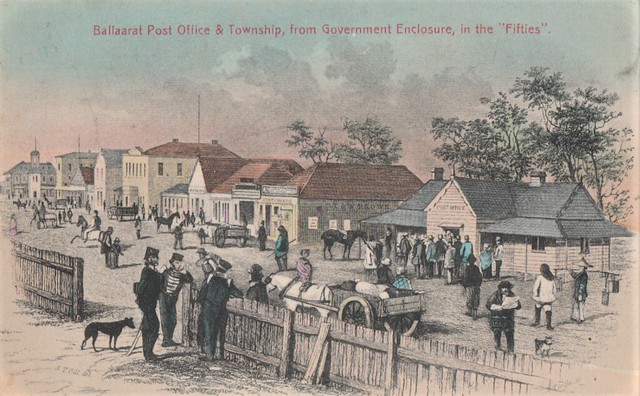 |
| Post Office and Township from Government enclosure, Ballarat, Vic, circa 1850s |
The Battle of the Eureka Stockade
The Irish digger, Peter Lalor, was chosen as leader by several hundred diggers, uniting beneath the Southern Cross flag to fight for their rights and liberty. And to protest the 30 shillings per month license fee charged by the government, required for the miners to work their claim.
 |
| Peter Lalor, Australian Town and Country Journal (Sydney, NSW : 1870 - 1907), Saturday 16 February 1889 |
Another area of contention was the death of James Scobie and the fast acquittal of the publican, James Bentley, the prime suspect in Scobie's murder. A riot by miners followed, and the Eureka Hotel was burnt down.
The battle
occurred on the 3rd December 1854 at Eureka Lead after the miners swore
allegiance to the Southern Cross. This uprising is regarded as an important step toward Australian democracy.
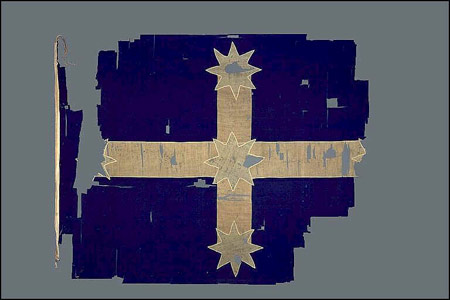 |
| The original Eureka flag |
 |
| Battle of the Eureka Stockade. J. B. Henderson [1854] Watercolour, J. B. Henderson, State Library of NSW |
The 30 deaths and many wounded at the Eureka Stockade in 1854 demonstrated the need for a hospital in the region.
A year later, in 1855, the building of a hospital
commenced. Before this, those needing medical attention went to a basic hospital which stood on the corner of Sturt and Lydiard Street.
 |
| Ballarat Hospital, building commenced, 1855, Australasian (Melbourne, Vic. : 1864 - 1946), Saturday 14 December 1895 |
Change in Australia's political system The Ballarat Star newspaper was first published on 22 September 1855.
Peter Lalor and J B Humffray were the first Parliamentary representatives of Ballarat after miners were granted the right to vote and representation in 1855.
The Eureka Treason Trials were held in Melbourne in 1855, and led to the acquittal of all those accused.
The first electric telegraph was sent from Melbourne to Ballarat in 1856.
Alfred Lester ran the Free Trade Hotel, Charlesworth Street, in 1856.
Following the survey of Ballarat, a large block of land in Lydiard Street South was set aside for The Cathedral of Christ the King. It was finally
completed in 1857.
The land for Ballarat Botanical gardens was set aside in 1857. Previously, this land was used as a police horse paddock.
Walter Craig bought Bath's Hotel. The name changed to Craig's Hotel in 1857.
 |
| 'Advertising.', The Star (Ballarat, Vic. : 1855 - 1864), 1857 |
 |
| Craig's Hotel, Ballarat in 1859, VIC, Leader (Melbourne, Vic. : 1862 - 1918, 1935) |
 |
| Craig's Royal Hotel, Punch (Melbourne, Vic. : 1900 - 1918; 1925) |
A Developing Town
In 1856 the building of a new gaol commenced. Today, the cells and bathhouses of the old gaol are still accessible beneath Federation University’s library building. It was also found recently that a secret
tunnel was constructed by 1862 to convey prisoners from the old Ballarat Gaol to the nearby courthouse. All prisons built in Victoria after 1851 adopted London's Pentonville Prison design of 1842.
The first court opened in 1856.
 |
| From a sketch of Ballarat made in 1855, Australian Town and Country
Journal (Sydney, NSW : 1870 - 1907), Saturday 17 December 1892 |
The Catholic, St Patrick's Cathedral of Ballarat, was built between 1857 and 1871.
 |
| Star (Ballarat, Vic. : 1855 - 1864), Thursday 26 March 1857 |
The Ballarat Gas Company commenced business on Saturday, July 17, 1858.
Yuille's Swamp (Lake Wendouree) was used as the first main water supply for the township of Ballarat during the late 1850s to 1860s.
 |
| Lester's Hotel in Sturt St, Ballarat, built 1862 |
Geelong to Ballarat line completed and construction of Ballarat West Railway Station began in 1862.
.jpg) |
| View of Mount Pleasant, as seen from School of Mines, Ballarat by Fred Kruger (c. 1866) |
A Bit of Drama
Marie Dolores Eliza Rosanna Gilbert, born 1818 in Limerick, Ireland, adopted the stage name Lola Montez. She danced at Ballarat's Victoria Theatre in 1856, a burlesque based on her infamous affair with King Ludwig of Bavaria.
As she performed, Lola was showered with gold nuggets from the packed audience. Later, she was involved in a scuffle with the editor of the Ballarat Times, with Lola publicly whipping the editor for besmirching her character in his newspaper.
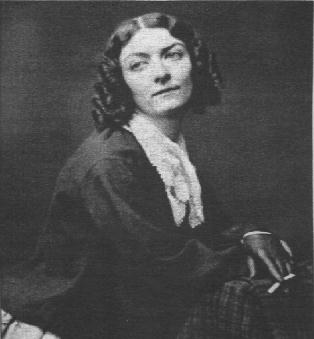 |
| Photograph of Lola Montez |
In 1858, the second-largest gold nugget ever found in Australia (weighing 68.98 kg), the "Welcome Nugget", was found at Bakery Hill.
In 1858 the population of the Victorian goldfields had reached 150,000, with more than half being British immigrants and 40,000 Chinese.
In the 1850s and 1860s, the Ballarat settlement consisted mostly of tents and timber buildings. However, during the 1860s, various fires resulted in the commercial area shifting to Ballarat West.
The Ballarat Benevolent Asylum opened in 1859, in Ascot Street.
The Mechanics' Institute was established in 1859 in the top floor of the Ballarat Fire Brigade in Barkly Street, built in two main stages, in 1860 -61 and 1869-70.
The Former Ballarat Post Office, located on the corner
of Sturt and Lydiard Streets, is the third building erected onto the
current site since 1858, when a bluestone
building was erected and demolished in 1863, having been regarded as a "monstrosity".
1860s
Ballarat Football Club established May 20, 1860.
The former E.S.& A. Bank in Lydiard Street was built for the Colonial Bank of Australasia in 1860.
In 1860, Cobb & Co introduced its massive "Leviathan" coach on the Geelong-Ballarat service.
 |
| Sturt St looking west from City Hall, Ballarat, VIC, 1860 |
 |
Mair Street, Ballarat, VIC, 1860s |
On the morning of the 11th January 1861, sixty buildings, including shops and stores and two theatres, were either burned down or gutted, and some forty others seriously damaged.
Some of the buildings which existed at this time were The United States Hotel, the Golden Age Hotel, the Old House at Home, the Star Hotel, and the Royal Mail Hotel.
Dr William Wills, of the famous Burke and Will's expedition of 1861, worked in the Ballarat Survey office. He had worked as a gold digger and then at his father's surgery practice at Ballarat in the 1850s.
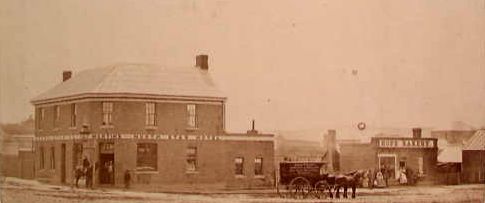 |
| North Star Hotel. Soldiers Hill, Ballarat in 1861 |
The great Main Road Fire of January 1861, caused sixty buildings, including shops and stores, two theatres, to be either burned down or gutted, and some forty others seriously damaged.
The Bank of New South Wales, at 13-15 Lydiard Street, was built in 1862.
The Ballarat East Library was established in the engine-house of the East Fire Station in 1862.
The former Union Bank at 4-6 Lydiard Street was built in 1863-64.
The former ANZ Bank at 202 Sturt Street, was originally built for the Bank of Australasia, in 1863.
 |
| Lydiard Street, Ballarat, VIC, circa 1861 |
The foundation stone of St Andrew's Kirk, Ballarat was laid in 1862.
The current Post Office building was constructed in 1863, on the north-east corner of Sturt and Lydiard Streets.
 |
| Negative - Prince Alfred, Duke of Edinburgh Visiting the Band of Hope Gold Mine, Ballarat, Victoria, 10 Dec 1867, MuseumsVIC (Famous visitors to Ballarat included Prince Alfred, Duke of Edinburgh in 1867, who stayed at Craig's Royal Hotel) |
The Union Bank in Lydiard Street was designed by Leonard Terry and built in 1863-64.
Ballarat Asylum, Orphanage, Children's Home was first astablished in 1865 and operated until the 1980s.
A fleet of pleasure craft sailed Lake Wendouree from the 1860s.
Gill's "Victoria" Paddle steamer was launched on Lake Wendouree in 1865.
Ballarat College commenced on Wednesday 6 July 1864 at the Presbyterian Church in Sturt Street.
The Courier newspaper was established in 1867.
The foundation stone for the Ballarat East Library building was laid on 21 January 1867.
A second courthouse was built in 1868.
In May 1868, the first Aboriginal Australian cricket team arrived in England for a series of matches. They spent six months there playing 47 two-day games.
Aboriginal XI (cricket team) was created with the assistance of Tom Wills—captain of the Victoria cricket team and founder of Australian rules football, whose father, Horatio Wills and 18 men, women and children in Horatio’s party were murdered by Aboriginal people on the Queensland frontier. There are recent claims that Wills participated in the murder of Aboriginal people.
 |
| Aboriginal cricketers, Ballarat, 1867. The team toured England. Out of Copyright. National Library of Australia |
1870s: Proclaimed a City
Ballarat was proclaimed a City in 1870.
Ballarat City Rowing Club was formed on Thursday 24 November 1870 at a meeting held at Brophy's Hotel, Doveton St.
Ballarat's Town Hall was built between 1870 and 1872.
By 1871, Ballarat had a population of almost 50,000.
The Ballarat Woollen Mill commenced production in October 1871 manufacturing flannels and blankets. In the 1880s, the mill began to make material for military uniforms.
 |
| THE BALLARAT VOLUNTEER REGIMENT—the winning "skirmishing team" in 1874, Australasian (Melbourne, Vic. : 1864 - 1946) |
Ballarat School of Mines was founded in 1871 and taught classes in surveying, mathematics and chemistry.
English author Anthony Trollope
visited Ballarat in 1872. Trollope was impressed with the city, which had a population of about 50 000 at this time.
In 1872 Australia's first Caesarean operation was performed on a patient at Ballarat Hospital.
 |
| Gill's Lake View Hotel built in 1875. The Lake View Hotel in Ballarat with a horse-drawn cab in front. The cab has a sign on its side reading 'Lake Victoria's'. There are people standing on the verandah. Ballarat, Victoria, circa 1890 |
Her Majesty's Theatre which opened in 1875, is the oldest purpose-built theatre in Australia to have been continuously used for live theatre.
 |
| Her Majesty's Ballarat is located at 17 Lydiard Street South, Ballarat, VIC, built 1875 to replace Ballarat’s Theatre Royal (1858), which stood around the corner in Sturt Street |
Ballarat Yacht Club formed in 1877 and held its first regatta in the same year.
The Ballarat Mental Hospital was established in 1877.
Henry Sutton made 20 versions of the telephone within 12 months of Alexander Graham Bell's claim of inventing the first working telephone in 1876.
 |
| Mr Henry Sutton, Weekly Times (Melbourne, Vic. : 1869 - 1954), Saturday 3 August 1912 |
Using his
homemade telephone, Sutton linked two houses in his district in late 1877. Then connected Geelong and Ballarat on the evening of January 9th 1878.
Sutton is credited with the creation of the first telephone link in Australia between Sutton's Music Store in Melbourne and the Music Factory in Ballarat. Sutton trained as a draftsman at the Ballarat School of Design.
 |
| Mary Phillips ('Queen Mary'), widow of 'King Billy' of Ballarat, 1877. Out of Copyright |
 |
| Ballarat Tribe - King Billy & his two wives. Circa 1878?, SLVIC |
1880s Ballarat Water Commission was established in July 1880.
Henry Sutton of Ballarat created the carbon filament lamp 16 days after Thomas Edison in 1881.
The Congregational Church, Ballarat was constructed in 1881-82.
 |
| A procession celebrating the visit of Prince Albert and Prince George to Ballarat, May 1881, Museums Victoria Collections |
The former Wesleyan Church of Ballarat was constructed between 1883 and 1884, on the corner of Lydiard and Dana Streets. The first Wesleyan Church in Lydiard Street was opened on 4/3/1855.
Eureka Stockade Monument was erected in 1886.
Trams in Ballarat were first used for public transport in 1887. These double-decker trams were built in Adelaide and were each drawn by multiple horses.
The Old Colonists Club was built for the Old Colonists Association in 1887-89.
Henry Sutton of Ballarat invented the Telephane in 1885, which used telegraph lines to transmit visual information. This invention was an important precursor to television.
1890s
"The Echo", the first Labor daily newspaper in Ballarat, began in 1895. James Scullin, the ninth Prime Minister of Australia, was editor of "The Echo" for eight years.
 |
| The South Star gold mine was formed in 1883, Leader (Melbourne, Vic. : 1862 - 1918, 1935), Saturday 30 November 1895 |
Let There Be Light
The Ballarat Electric Supply Company power station opened in 1895 powered by two 50-horsepower steam engines. At first, the power was only used for street lighting.
 |
| The Ballarat Courier, Leader (Melbourne, Vic. : 1862 - 1918, 1935), Saturday 30 November 1895 |
 |
| Ballarat in 1895, Australasian (Melbourne, Vic. : 1864 - 1946), Saturday 14 December 1895 |
 |
| Palmer's Chemist Shop was located at 21 Lydiard St Ballarat, Australasian (Melbourne, Vic. : 1864 - 1946), Saturday 14 December 1895 |
 |
| Annual picnic of the fruiterers, Ballarat, VIC, Weekly Times (Melbourne, Vic. : 1869 - 1954), Saturday 10 April 1897 |
 |
| Thomas Edwards', a Cornish proprietor of pyrites works at Bendigo and Ballarat.Weekly Times (Melbourne, Vic. : 1869 - 1954), Saturday 26 February 1898 |
 |
| George Hotel, Ballarat, VIC, Weekly Times (Melbourne, Vic. : 1869 - 1954), Saturday 26 February 1898 |
 |
| Summerscales Book and Stationary Depot, Australian Town and Country Journal (Sydney, NSW : 1870 - 1907), Saturday 19 August 1899 |
 |
| Ballarat Council and Officers, Australian Town and Country Journal (Sydney, NSW : 1870 - 1907), Saturday 2 September 1899 |

A view of Ballarat, VIC, Australian Town and Country Journal (Sydney, NSW : 1870 - 1907), Saturday 19 August 1899
 |
| Sturt and Lydiard Streets Ballarat in 1899, Victoria |
1900s
From 1901 until 1965, the Ballarat Library was located above the Summerscales bookshop.

Trekardo Bros Butchers in Ballarat, Victoria, early 1900s.
Kaye St Patrick's Cathedral Hall was erected in 1900.
 |
| Party at the railway picnic at Ballarat, VIC, Weekly Times (Melbourne, Vic. : 1869 - 1954), Saturday 30 March 1901 |

St Patrick's Cathedral Hall, Freeman's Journal (Sydney, NSW : 1850 - 1932), Saturday 24 August 1901
 |
| The Royal Visit To Ballarat, VIC, Australian Town and Country Journal (Sydney, NSW : 1870 - 1919), Saturday 25 May 1901 |
 |
| Her Majesty's Theatre, Ballarat, VIC, Punch (Melbourne, Vic. : 1900 - 1918; 1925), Thursday 13 August 1903 |
 |
| Eureka Stockade Celebrations, Ballarat, VIC, Weekly Times (Melbourne, Vic. : 1869 - 1954), Saturday 10 December 1904 |
 |
| Ballarat, VIC, Leader (Melbourne, Vic. : 1862 - 1918, 1935), Saturday 21 December 1907 |
 |
| Brass Band in Ballarat, Victoria - early 1900s, Aussie~mobs |
 |
| C.H. Ludbrook and Young & Co in Ballarat, Victoria - very early 1900s, Aussie Mobs |
 |
| Woolen Mills employees picnic at Ballarat, Weekly Times (Melbourne, Vic. : 1869 - 1954), Saturday 16 April 1910 |
Ballarat Regatta, Australasian (Melbourne, Vic. : 1864 - 1946), Saturday 8 March 1913
A red brick Federation-era courthouse was built in Ballarat's Camp Street in 1904.
Steamtrams were replaced by electric trams in 1905.
The last execution in the Ballarat Gaol took place in June 1908.
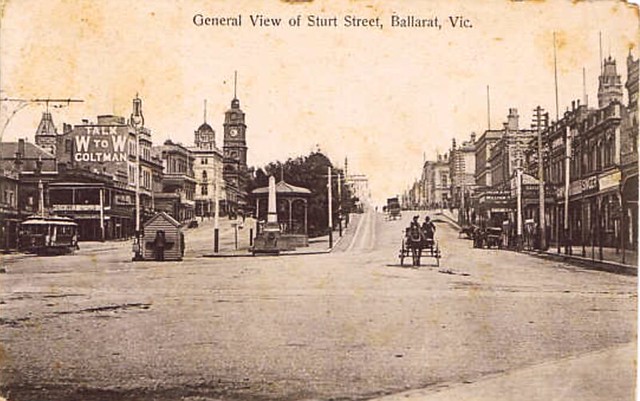 |
| Sturt Street, Ballarat, Victoria - 1907 Kaye |
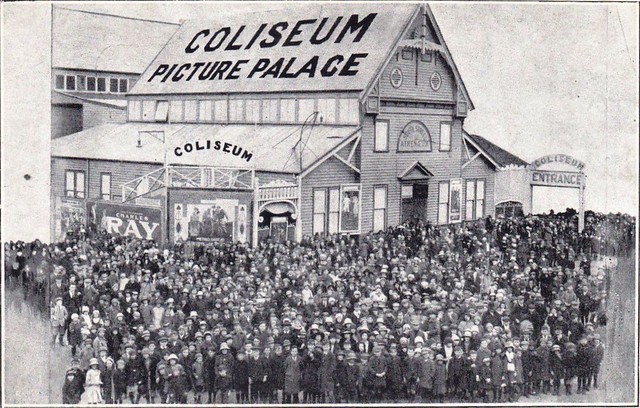 |
Advertising postcard for the Coliseum Picture Palace, Ballarat, Victoria. The Coliseum Picture Palace was built for the South Street Competitions in 1908
|
In April 1910, the Ballarat Continuation School moved from 208 Sturt Street to its present site at the corner of Sturt and Gillies streets.
Ballarat Church of England Grammar School for Boys was opened by Bishop Browne on the current Forest Street site in 1911.
The Church of England Girls’ Grammar School, which was acquired by the Anglican Diocese in 1918, was formerly the Queen’s College, which was
established in 1877.
Ballarat North Workshops opened in 1917 by the Victorian Railways.
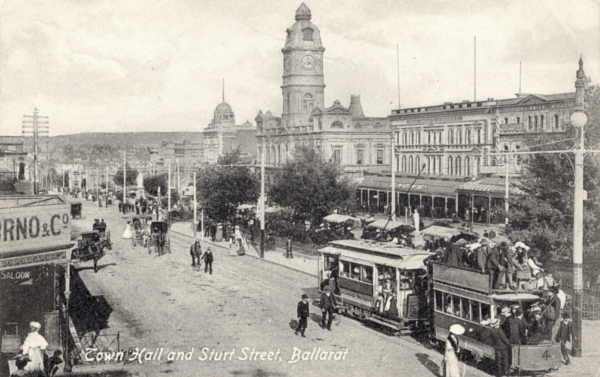 |
| Town hall and Sturt Street, Ballarat in 1917 |
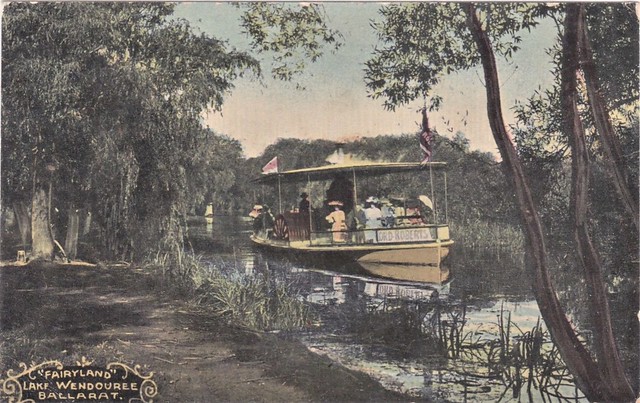 |
| On Lake Wendouree, Ballarat, Victoria, circa 1917 |
World War I
WWI occurred after the assassination the Austrian archduke Franz Ferdinand and involves nationalism, militarism, and Europe's web of alliances.
 |
| Khaki Girls Bugle Band in Ballarat, Victoria - WW1 era. The Khaki Girls worked for the Defence Department Clothing Factory and marched through the streets of Victoria raising money for the soldiers at the front during World War 1.Aussie~mobs |
The Ballarat Avenue of Honour, the first of its kind in Australia, was planted in 1917, to represent all those serving in the war.
1920s The Sebastopol Sewage Treatment Works was completed in 1925, and the first properties were connected.
The East Ballarat Town Council was amalgamated with Ballarat West Town Council in 1921 to become the City of Ballarat.
The Sunshine Biscuit & Confectionery Company building burnt down in 1923. The original business was established by James Long as a confectionery business, in Ballarat, in 1854.
 |
| Advocate (Melbourne, Vic. : 1868 - 1954), Thursday 29 March 1928 |
 |
| Ballarat Railway Workshops, Weekly Times (Melbourne, Vic. : 1869 - 1954), Saturday 11 July 1925 |
1930sBallarat Agricultural Society's Annual Show, Weekly Times (Melbourne, Vic. : 1869 - 1954), Saturday 22 November 1930

Vehicles lined up outside Pascoe Motors in Armstrong Street, Ballarat, circa 1930s?
Kaye |
| Another picture of KING BILLY, of Ballarat, VIC, Age (Melbourne, Vic. : 1854 - 1954), Saturday 23 March 1935. (Aboriginal people did not traditionally have kings or chiefs) |
 |
| Eighth battalion trains at Ballarat, Australasian (Melbourne, Vic. : 1864 - 1946), Saturday 20 February 1937 |
1940s and WWII
The causes of World War II include fascism and militarism in Germany and Japan, worldwide economic depression, and the impact of the Treaty of Versailles following WWI.
Prime Ministers Avenue was created in 1940.
 |
| TRAINEES AT THE WIRELESS AIR GUNNERS' SCHOOL at Ballarat (V) learning to handle Sets identical with those with which planes are equipped. Later they learn while flying. Australasian (Melbourne, Vic. : 1864 - 1946), Saturday 6 September 1941 |
 |
| VAD's who assist voluntarily in staffina the RAAF Hosoitai. Ballarat, VIC, Weekly Times (Melbourne, Vic. : 1869 - 1954), Wednesday 11 November 1942 |
 |
| CHINESE SQ.-LDR. FOR R.A.A.F. Veteran Pilot Promoted in August to his
present rank,. Squadron Leader R. F. Goon, Australian-born Chinese
airman of Ballarat, fought against the Japanese in China with a Chinese
volunteer flying group in 1937, and Has served in Darwin and with a
bomber squadron in New Guinea with the R.A.A.F, Age (Melbourne, Vic. :
1854 - 1954), Wednesday 24 November 1943 |
Ballarat's Begonias
Ballarat Begonia Festival has been run since 1953.
 |
| Begonias in the Ballarat gardens were a feature of today's Royal welcome, Herald (Melbourne, Vic. : 1861 - 1954), Saturday 6 March 1954 |
1970s
 |
| Ballarat, VIC, circa 1979, Matt W |
 |
| Ballarat, VIC, circa 1979, Matt W |
 |
| Ballarat, Vic, Circa 1977, Matt W |
 |
| Ballarat, Vic, circa 1971, Matt W |
1980s
 |
| Ballarat, VIC, circa 1983, Matt W |
 |
| Ballarat, VIC, circa 1983, Matt W |
Sovereign Hill : Experience The Past
Sovereign Hill depicts Ballarat in the first ten years after the discovery of gold there in 1851. It opened in 1970.
 |
| Sovereign Hill, Ballarat, VIC |
 |
| Sovereign Hill, Ballarat, VIC |
At the time of Eureka Stockade, Ballarat was mostly a muddy field of tents, with a population of miners from many parts in the world, who had descended on Ballarat, in the hope of striking it rich. The wealth that came from the goldfields and the political reform that flowed from Eureka Stockade transformed Ballarat and indeed, Australia. Many miners who were qualified to vote bought land and solid buildings were established. The gold riches also contributed to the construction of schools, churches, hospitals and other institutions. And the prosperity of the town during the mining boom resulted in the opulent and grand architecture, reminiscent of Europe, which we can still enjoy today.
Around Ballarat
 |
| Ballarat Town Hall, 1870, Ballarat, VIC |
 |
| The former Ballarat Post Office building, Ballarat, VIC |
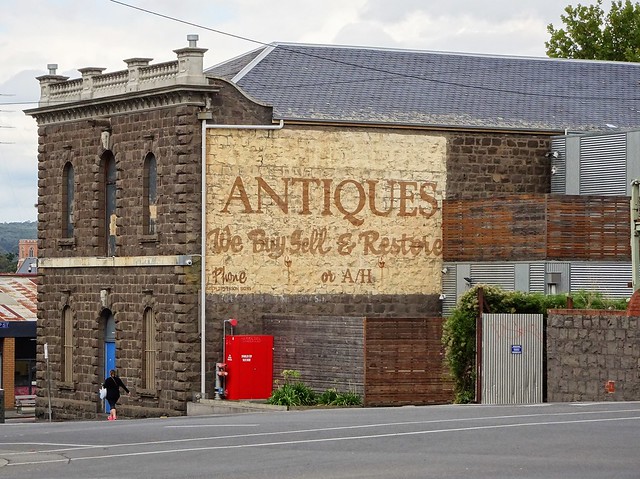 |
| Old warehouse in Ballarat, VIC, from the 1880s. denisbin |
 |
| George Hotel in Ballarat, Ballarat, VIC |
 |
| Ballarat, Queen Victoria Statue, Victoria, Ballarat, VIC |
 |
| Statuary Pavilion at Ballarat Botanic Gardens, Ballarat, VIC |
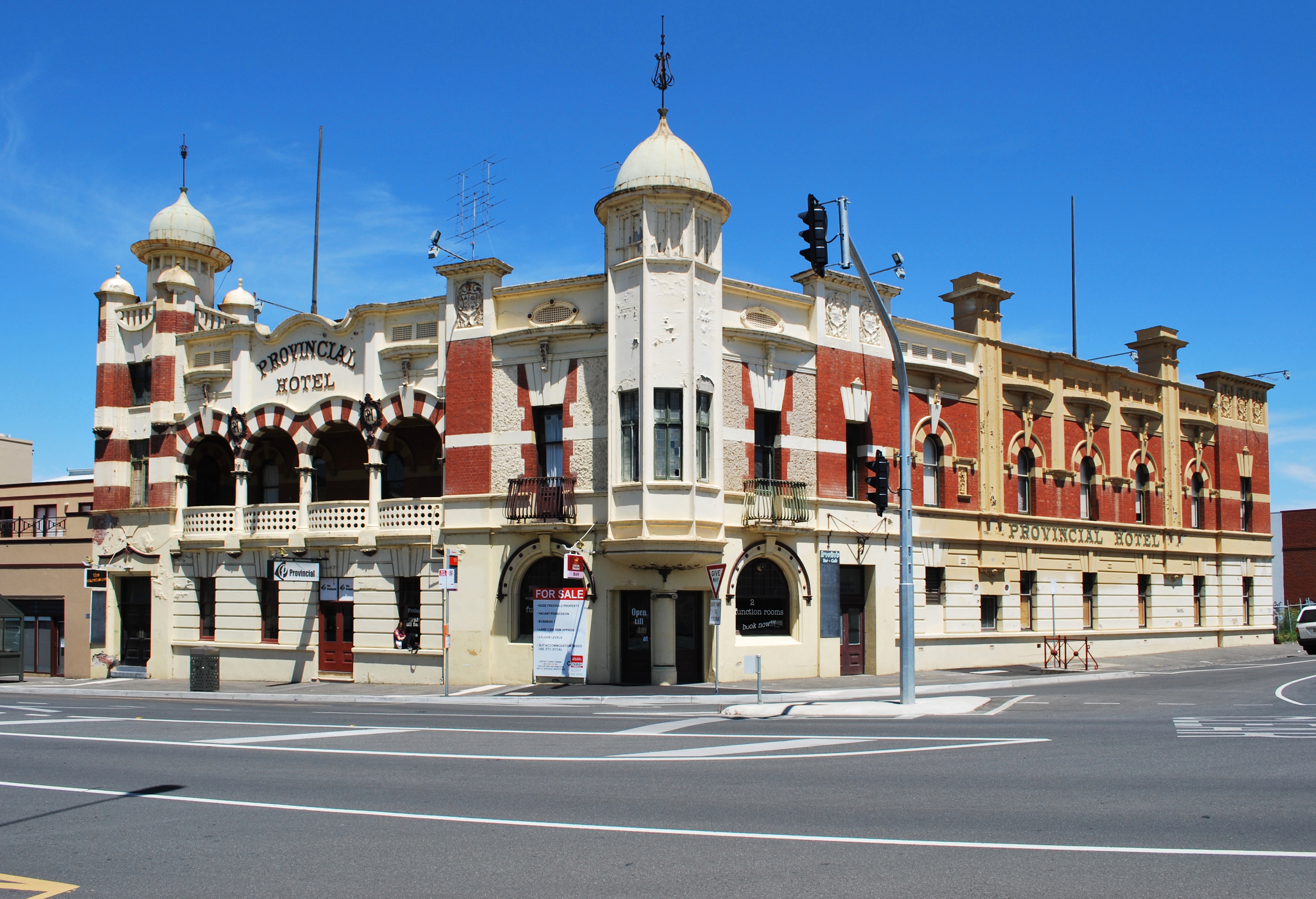 |
| Ballarat, Provincial Hotel, Ballarat, VIC |
 |
| Venetian Gothic office building. Corner of Lydiard & Sturt Streets, Ballarat. |
 |
| Old Colonists Hall at Ballarat |
 |
| Lascelles Terrace. Errand Street North, Ballarat. |
 |
| This photo of Ballarat Railway Station is courtesy of TripAdvisor |
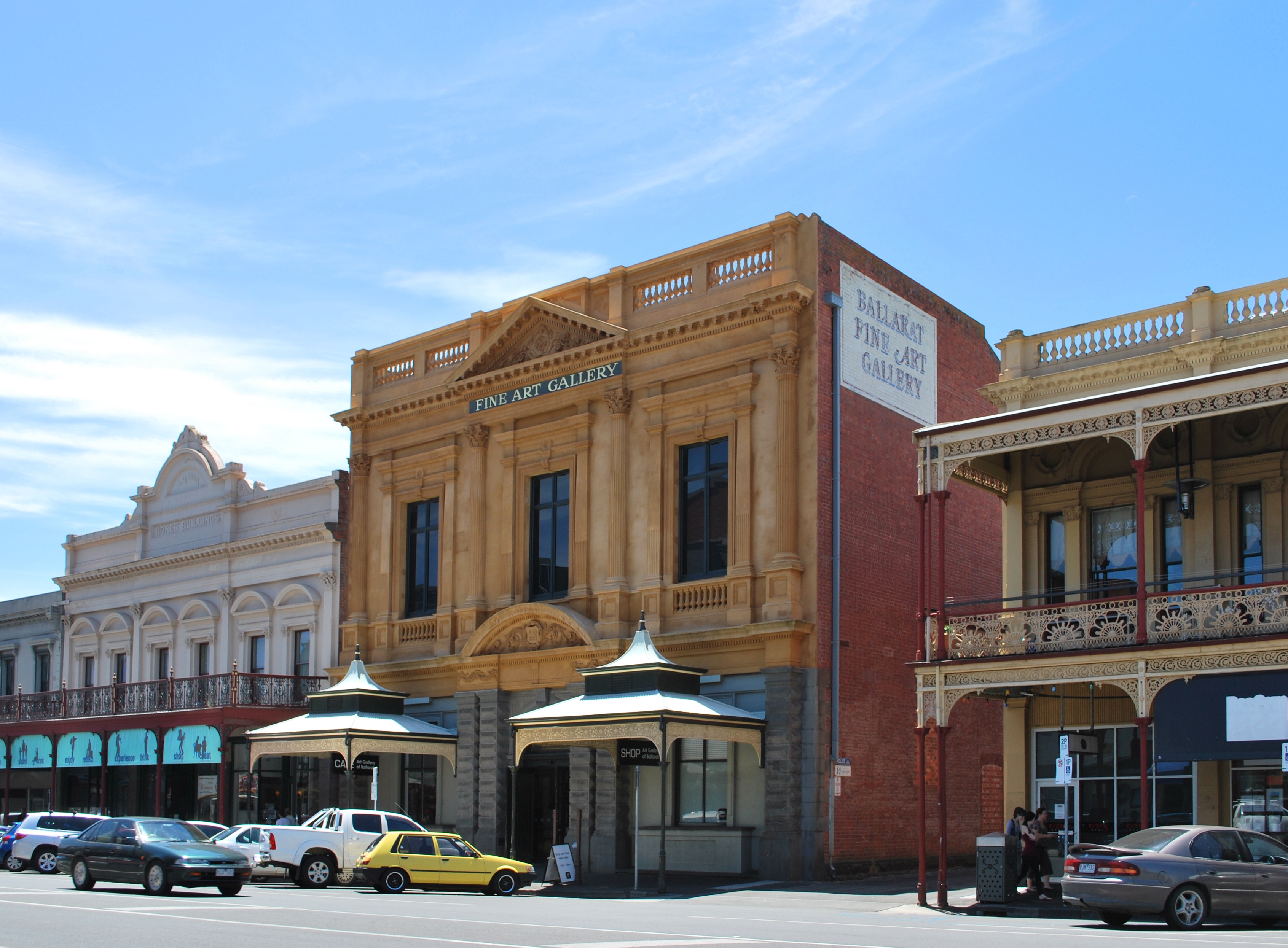 |
| Established in 1884 as the Ballarat Fine Art Gallery by the citizens of Ballarat |
 |
| Arch of Victory Alfredton looking east from the avenue of honour, Ballarat, VIC |
 |
| Burke and Wills memorial fountain (1866-7) at Ballarat, Australia |
 |
| Queen Victoria statue holding a golden angel to commemorate her Golden Jubilee, was unveiled 24th May 1900 |
 |
| The Summerscales Building - Corner Sturt and Camp Streets, Ballarat. Constructed in 1895 |
 |
| The former National Mutual Insurance Company's Ballarat was built in 1905 |
 |
| Bust of nineteenth Prime Minister of Australia John Gorton by sculptor Victor Greenhalgh located in the w:en:Prime Minister's Avenue in the Ballarat Botanical Gardens |
.jpg) |
| Ballarat, Victoria, |
 |
| Lydiard Street, Ballarat, VIC, Victorian Renaissance Revival style, Lynn’s Chambers, was tthe workplace of the first solicitor to practice on the Ballarat goldfields, Irish-born, Adam Loftus Lynn |
 |
| Thomas Belsom's House - Sturt Street, Ballarat, was originally one storey 1865. Art Nouveau style |
 |
| Buildings in Ballarat, VIC. The Bones' Building and the Fine Art Gallery |
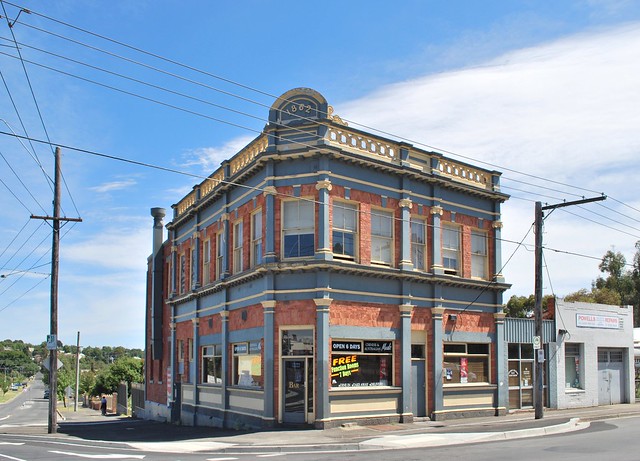 |
| Eastern Station Hotel, Ballarat, VIC, Matt |
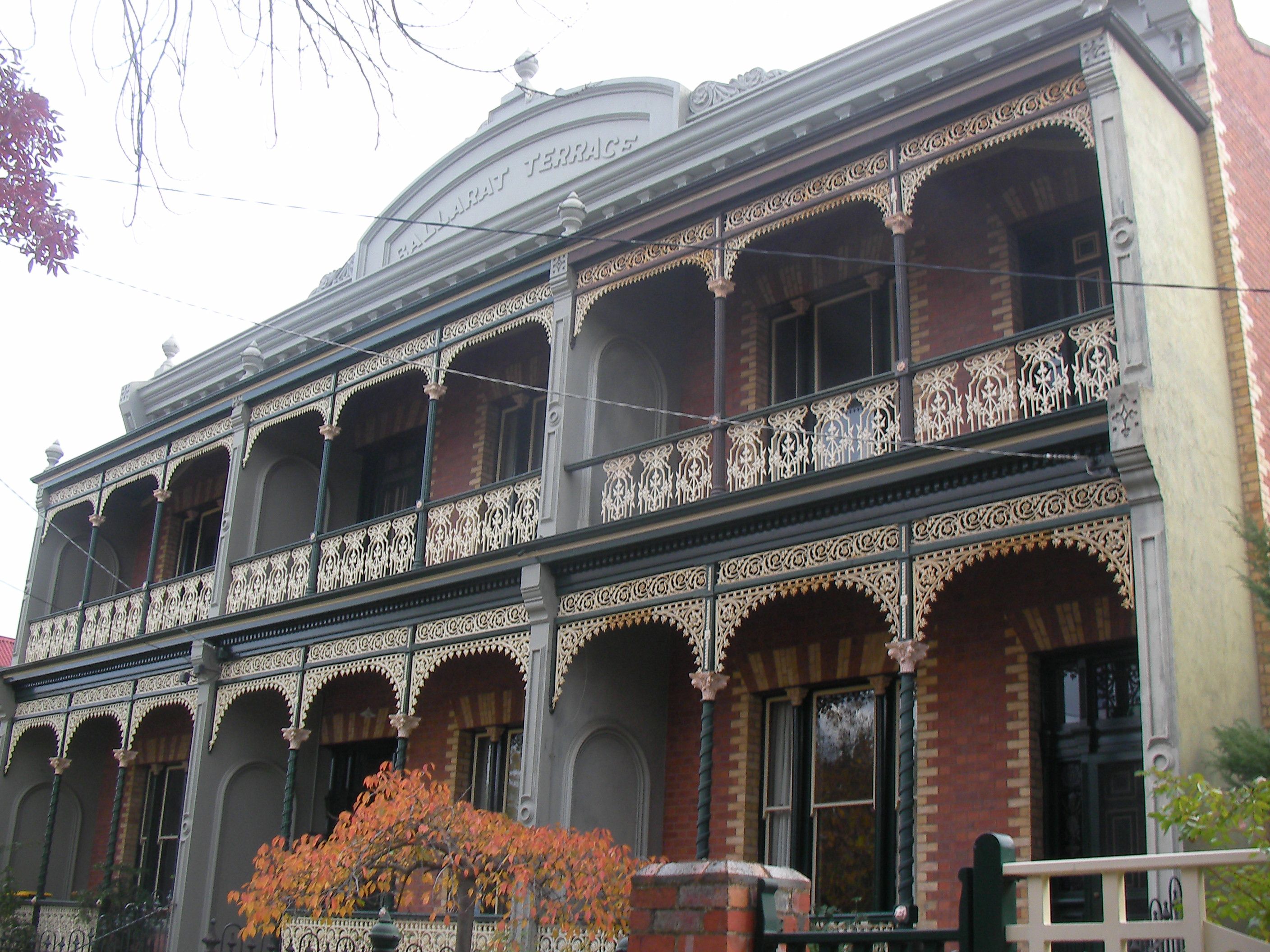 |
| Ballarat Terrace. Lydiard Street North. Ballarat, VIC Biatch2 |
 |
| Her Majesty's Theatre. Ballarat, Victoria opened in 1875 , Biatch |
 |
| 802 Sturt street was constructed in 1894-95 as a residence and consulting rooms for Dr. Emil Guthiel, Mattinbgn |
 |
| The old Ballarat East public library, located across the road from its original location, level two of Ballarat East Fire Station. Established in 1862, Jack bulldog 2012 |
.jpg) |
View of Sturt Street, Ballarat. View from Bell Tower of St Peter's
Anglican Church, Ed Dunens |
 |
| Heritage-listed synagogue at Ballarat, Victoria, in Barkly Street, Ballarat was built in 1861, Mattinbgn |
 |
| Centenary Hotel was originally named the North Grant Hotel and built from timber in the 1850s. This building was erected in 1894 |
 |
| Peter Lalor Hotel was named after the leader of the miners' at the Eureka Stockade and Speaker of the Victorian Parliament. In 1861 the hotel was called Tait's Hotel and later, the Royal Highlander |
 |
| Bunch of Grapes Hotel in Ballarat, Australia, circa 1906, Mattinbgn |
 |
| The old police station in Camp Street, Ballarat, Victoria, completed 1886, Peterdownunder |
 |
| The Ballarat Trades Hall, Ballarat, VIC, was constructed in 1887-88 |
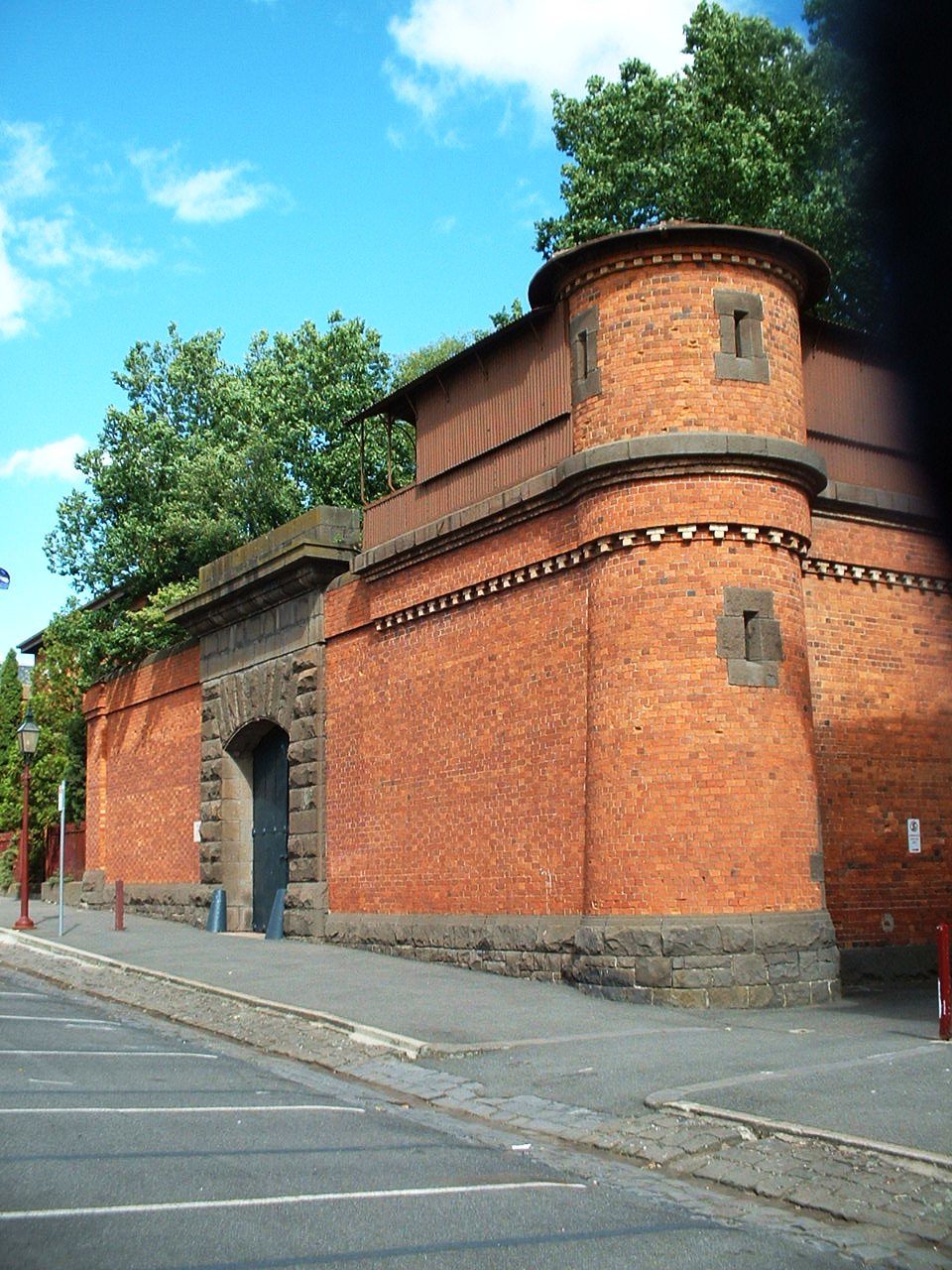 |
| The remaining gaol tower at the old Ballarat Gaol, Victoria, Australia. Building completed in 1862 |
 |
| Pavilion on the Lake, Ballarat, VIC, circa 1887, Biatch |
Things To Do and Places To Go
Podcast about Willaim Buckley and The Aboriginal Experience



















.jpg)











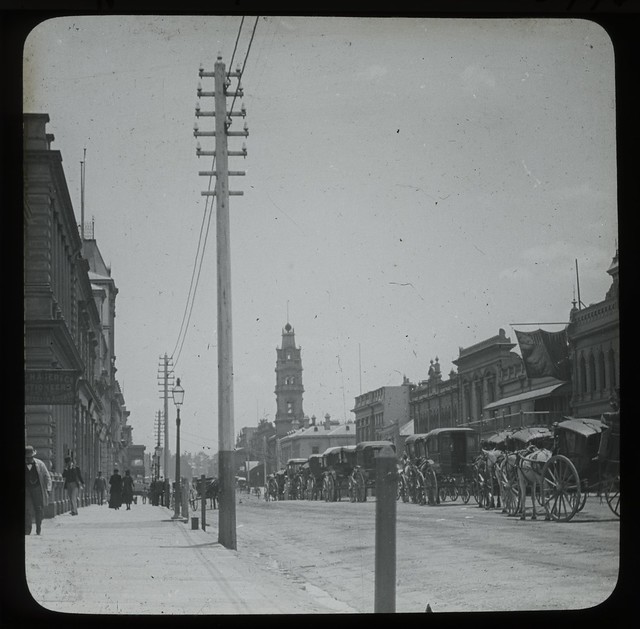
























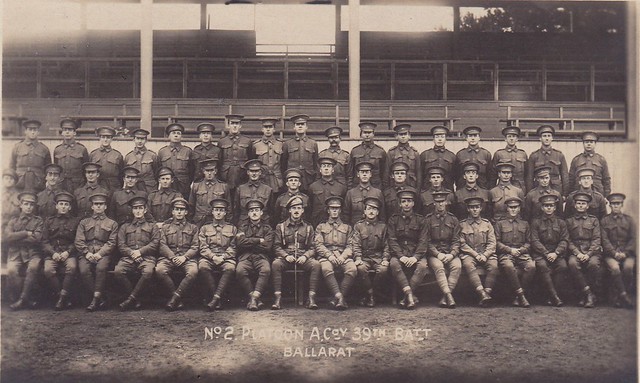


























.jpg)






.jpg)















